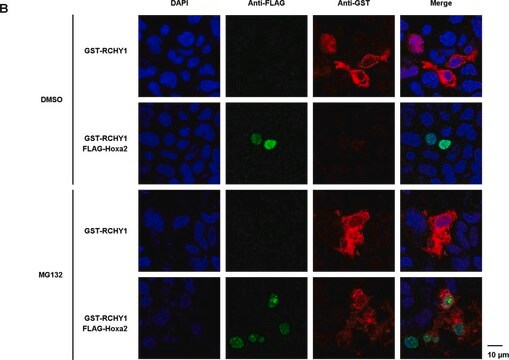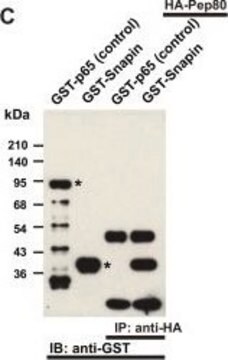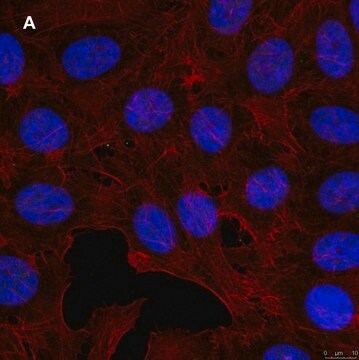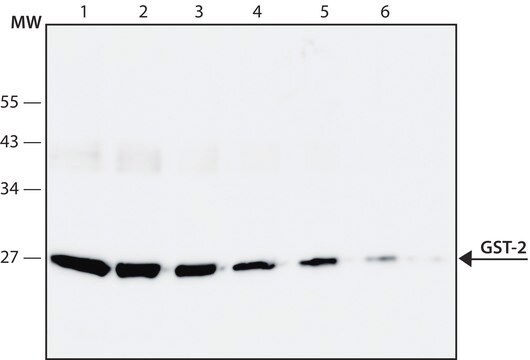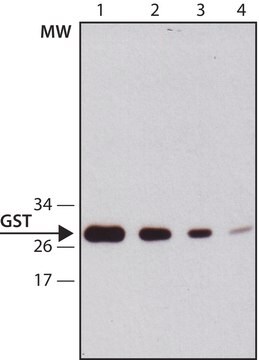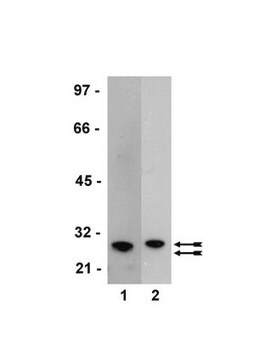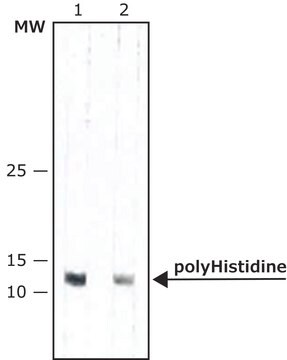A7340
Anti-Glutathione-S-Transferase (GST)–Peroxidase Conjugate antibody produced in rabbit
IgG fraction of antiserum, buffered aqueous solution
Synonym(s):
Anti-Glutathione-S-Transferase, Anti-GST
About This Item
WB
western blot: 1:10,000 using lysates of Escherichia coli induced to express recombinant GST
Recommended Products
biological source
rabbit
Quality Level
conjugate
peroxidase conjugate
antibody form
IgG fraction of antiserum
antibody product type
primary antibodies
clone
polyclonal
form
buffered aqueous solution
mol wt
antigen 27.5 kDa
technique(s)
direct ELISA: 1:10,000
western blot: 1:10,000 using lysates of Escherichia coli induced to express recombinant GST
shipped in
dry ice
storage temp.
−20°C
target post-translational modification
unmodified
Looking for similar products? Visit Product Comparison Guide
Related Categories
General description
Specificity
Immunogen
Application
- immunoblotting
- affinity pull-down assay
- western blotting
- enzyme linked immunosorbent assay (ELISA)
Western Blotting (1 paper)
Biochem/physiol Actions
Physical form
Preparation Note
Disclaimer
Not finding the right product?
Try our Product Selector Tool.
Signal Word
Danger
Hazard Statements
Precautionary Statements
Hazard Classifications
Resp. Sens. 1 - Skin Sens. 1
Storage Class Code
12 - Non Combustible Liquids
WGK
WGK 2
Flash Point(F)
Not applicable
Flash Point(C)
Not applicable
Regulatory Listings
Regulatory Listings are mainly provided for chemical products. Only limited information can be provided here for non-chemical products. No entry means none of the components are listed. It is the user’s obligation to ensure the safe and legal use of the product.
JAN Code
A7340-VAR:
A7340-BULK:
A7340-.5ML:4548173187259
Choose from one of the most recent versions:
Already Own This Product?
Find documentation for the products that you have recently purchased in the Document Library.
Our team of scientists has experience in all areas of research including Life Science, Material Science, Chemical Synthesis, Chromatography, Analytical and many others.
Contact Technical Service